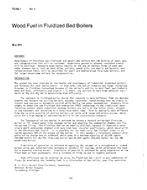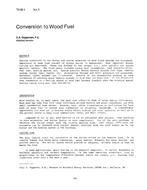-
-
Available Formats
- Options
- Availability
- Priced From ( in USD )
-
Available Formats
-
- Immediate download
- $16.00
- Add to Cart
Customers Who Bought This Also Bought
-

TO-82-08-3 -- A Steady State Computer Simulation Model fo...
Priced From $16.00 -

TO-82-08-4 -- An Optimized Two-Capacity Advanced Electric...
Priced From $16.00 -

TO-82-01-4 – Wood Fuel in Fluidized Bed Boilers
Priced From $16.00 -

TO-82-01-5 -- Conversion to Wood Fuel
Priced From $16.00
About This Item
Full Description
For predicting of thermal comfort in a space, it is essential to assess the insulation of the clothing worn by occupants. Most available data on thermal insulation of clothing ensembles have been measured on standing thermal manikins. The purpose of this study is to investigate the influence of body posture and activity on the thermal insulation of clothing.
The study investigates four typical clothing ensembles. The measurements were made on a movable thermal manikin, which can stand, be seated, or bicycle on an ergometer. The insulation of the four clothing ensembles will later be measured while worn by a group of subjects; this paper deals with the manikin studies.
A clothing ensemble increases the surface area of a person, and because the heat loss takes place from a largersurface than when nude, the efficiency of the thermal insulation of a clothing ensemble decreases. This effect is related to the clothing area factors, which was measured by a photographic technique in the present study.
Many years ago, researchers realized that measurement of the thermal insulation of samples of textiles on a flat plate was not sufficient to characterize the insulation of a clothing ensemble worn by a person. This resulted in the development of heated thermal manikins, simulating the dry heat loss from a human being. The thermal manikins at Kansas State University and USARIEM have a standing fixed position, while the manikin in Hohenstein has movable joints at the hips and the shoulders . In other studies the thermal insulation of clothing has been studied while worn by human beings.
The thermal insulation of a clothing ensemble is given in this paper by the "clo" unit introduced by Gagge et al . b The thermal insulation of a typical business suit, 1 clo, may provide comfort for sedentary work at 21°C (1 clo = 0 .155 m2 x K/W).





